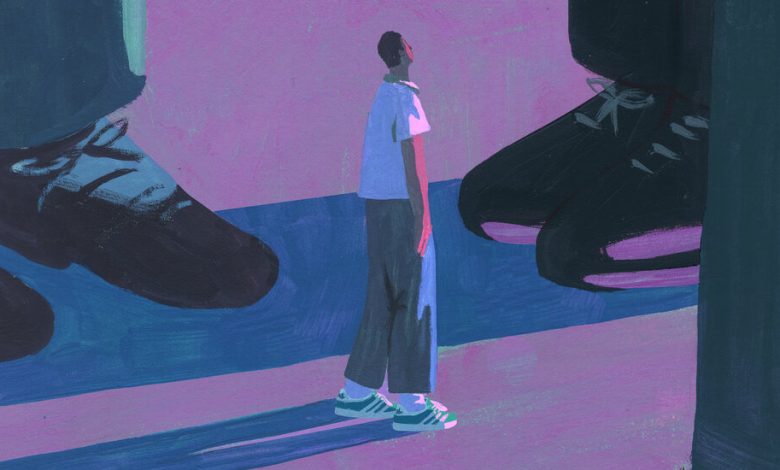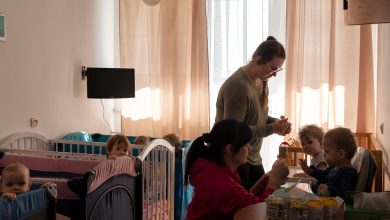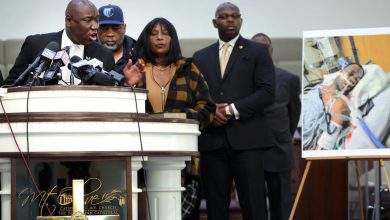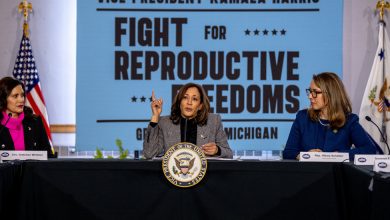Efforts to Protect Troubled Teens Don’t Go Far Enough

In 1994, the 15-year-old Liz Ianelli was sent by her parents to the Family Foundation School in Hancock, N.Y., which claimed to treat her disruptive behavior. But she said her “therapy” for most of the next three years consisted of daily emotional attacks by staff and fellow students, forced labor, food deprivation and other assaults. While there, she was also raped by a kitchen employee, she said. Then, as punishment for “lying” about it, she was bound in a blanket with duct tape and left in a boiler room for eight days.
Now Ms. Ianelli is an activist and the author of a new memoir, “I See You, Survivor,” which details her ordeal. But she is far from alone. Hundreds of thousands of young Americans have endured similar harms or assaults in residential boot camps, wilderness therapy and Christian and therapeutic boarding schools, which claim to vanquish teen psychological problems like drug misuse, depression and defiant behavior. Among them is Paris Hilton, who first told her story in a 2020 documentary and is now lobbying for recently introduced legislation to stop the abuse.
These children’s programs act similarly to psychiatric hospitals in that they control residents’ custody and communication with the outside world, but they are typically not strictly regulated. Some states exempt programs that claim to be religion-based from standards enforced on other child-caring facilities, while some states have few, if any, regulations on these programs. Because more than a dozen states allow spanking and paddling in schools, corporal punishment that would be illegal in prisons occurs in many of these programs. Evidence suggests that the punitive “therapies” that these facilities use are unsafe and ineffective.
Advocates estimate that around 100,000 teens are held in such programs annually, but the exact number is not known because the government does not track them. One example is the private school Hidden Lake Academy, to which the billionaire Harlan Crow paid tuition for Supreme Court Justice Clarence Thomas’s grandnephew. In a 2008 congressional hearing, a parent described how her child was subjected to attack therapy — brutal emotional assaults and public humiliation aimed at breaking down problematic personalities at the school, which was shut down in 2011 after a lawsuit helped bankrupt it. But until Ms. Hilton took up the cause, efforts to protect youth on the federal level had stalled.
The Family Foundation School, which Ms. Ianelli attended, appears to have had a student population that ranged from about 30 to 200 kids when it operated, from the 1980s until 2014. But she has documented roughly 100 deaths, largely caused by suicide and overdose, among alumni, including approximately 20 people she knew personally. This seems like an extraordinarily high death rate, even if all of the teens admitted initially had serious addictions and psychiatric disorders (which some did not). Survivors of other programs have kept similarly gruesome lists.
One of those who died was Jon Martin-Crawford, who attended the Family Foundation School with Ms. Ianelli and was her close friend. He testified about the abuse he experienced and witnessed in a congressional hearing in 2008. The goal was to pass legislation to ban abusive treatment and require reasonable access to phones in similar facilities. In 2015, he died by suicide.
The 2008 legislation, sponsored by Representative George Miller of California, was spurred in part by reporting I conducted for the first book to expose the industry, originally published in 2006. Variations of the bill passed the House at least two times, but it ultimately did not make it through the Senate.
This spring, however, driven by Ms. Hilton’s activism, Representative Ro Khanna of California and Senator Jeff Merkley of Oregon teamed up with the Republican senator John Cornyn of Texas, Representative Earl “Buddy” Carter of Georgia and Senator Tommy Tuberville of Alabama to introduce a new bill. Known as the Stop Institutional Child Abuse Act, or S.I.C.A.A., it now has some 50 co-sponsors who are hoping to hold hearings on it this fall.
S.I.C.A.A. would authorize a study to be conducted by the National Academies of Sciences, Engineering and Medicine to determine, among other things, how many youth are held in residential settings for behavioral problems, how much federal money is spent on them and where it comes from.
Part of the regulatory and research challenge with this issue is that these programs serve children across multiple funding streams. Some kids are sent to the programs by parents, while others are mandated by criminal justice agencies or their stay is funded by public schools that can’t manage their behavioral disabilities. Still others are funded by child welfare agencies. As a result, no one knows how many kids are being maltreated — or where.
The legislation also creates a multiagency working group to recommend best practices and prioritize safer, evidence-based outpatient services over sending kids away. But without enforcement measures — like a ban on abusive practices and a mechanism for oversight like unannounced inspections — it will not be able to stop the abuse.
“This bill is a first step. Obviously, we have to go further,” said Mr. Khanna, adding that he wanted to create legislation that could actually pass in a divided Congress. Historically, Republicans have opposed new regulations — especially those that would allow civil suits against businesses for harm done — and the costs associated with them. Some conservatives also support allowing corporal punishment in schools and religious organizations as part of what they call “parental rights.”
Some survivors worry that the new law could legitimize these programs, which could point to the legislation and claim that they are now federally regulated, even though there’s little enforcement. The fact that the National Association of Therapeutic Schools and Programs, which represents industry groups, has strongly endorsed the bill adds to this concern. The Family Foundation School was an early member of the association, as were many other organizations now known to use abusive tactics.
“I feel that this is very soft,” said Ms. Ianelli. “It’s like trying to put a Band-Aid on an arterial bleed.” She added: “This is a devastating, harmful industry. Today a kid could die in a program.” Indeed, a Government Accountability Office investigation conducted in the late 2000s documented abuse-related deaths, as well as thousands of abuse allegations.
It is shameful that Republicans have made it impossible to pass legislation with real teeth to ban clearly harmful tactics like corporal punishment in children’s residential care. It is a disgrace that companies can sell youth residential treatment for psychiatric and drug problems without required staff credentials or proof that the treatment being provided is safe and effective and meets the standard of care for the child’s diagnosis. And it’s nauseating to know that labeling humiliating attacks as “therapy” currently still allows teens to be physically and emotionally abused and sexually harassed.
The Stop Institutional Child Abuse Act is far from enough to corral a billion-dollar industry that profits from harming kids. But at least we might learn how many are being hurt and what taxpayers are paying for it.
Maia Szalavitz (@maiasz) is a contributing Opinion writer and the author, most recently, of “Undoing Drugs: How Harm Reduction Is Changing the Future of Drugs and Addiction.”
The Times is committed to publishing a diversity of letters to the editor. We’d like to hear what you think about this or any of our articles. Here are some tips. And here’s our email: [email protected].
Follow The New York Times Opinion section on Facebook, Twitter (@NYTopinion) and Instagram.





